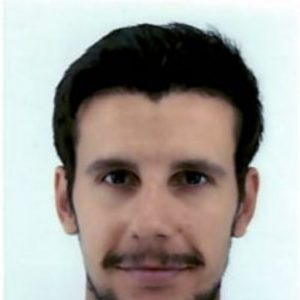

Efficient simulation tools for real-time monitoring and control using model order reduction and data-driven techniques
2 September, 2019 @ 3:30 pm - 5:00 pm
 It is required in many scientific and engineering fields to study the behavior of systems whose mathematical models are too complex to provide analytical solutions and it makes a virtual evaluation of systems responses possible (virtual twins). This drastically reduces the number of experimental tests for accurate designs of the real system that the numerical model represents. It is required in many scientific and engineering fields to study the behavior of systems whose mathematical models are too complex to provide analytical solutions and it makes a virtual evaluation of systems responses possible (virtual twins). This drastically reduces the number of experimental tests for accurate designs of the real system that the numerical model represents. However these virtual twins, based on classical methods which make use of a rich representation of the system (e.g. finite element method), rarely allows real-time feedback, even when considering high-performance computing, operating on powerful platforms. In these circumstances, the real-time performance required in some applications is compromised. Indeed the virtual twins are static, that is, they are used in the design of complex systems and their components, but they are not expected to accommodate or assimilate data to define dynamic data-driven application systems. Moreover, significant deviations between the observed response and the one predicted by the model are usually noticed due to inaccuracy in the employed models, in the determination of the model parameters or in their time evolution. In this thesis, we propose different methods to solve these handicaps to perform real-time monitoring and control. In the first part Model Order Reduction (MOR) techniques are used to accommodate real-time constraints; they compute a good approximation of the solution by simplifying the solution procedure instead of the model. The accuracy of the predicted solution is not compromised and efficient simulations can be performed (digital twins). In the second part, data-driven modeling is employed to fill the gap between the parametric solution, computed by using non-intrusive MOR techniques, and the measured fields, to make dynamic data-driven application systems, DDDAS, possible (hybrid twins).
It is required in many scientific and engineering fields to study the behavior of systems whose mathematical models are too complex to provide analytical solutions and it makes a virtual evaluation of systems responses possible (virtual twins). This drastically reduces the number of experimental tests for accurate designs of the real system that the numerical model represents. It is required in many scientific and engineering fields to study the behavior of systems whose mathematical models are too complex to provide analytical solutions and it makes a virtual evaluation of systems responses possible (virtual twins). This drastically reduces the number of experimental tests for accurate designs of the real system that the numerical model represents. However these virtual twins, based on classical methods which make use of a rich representation of the system (e.g. finite element method), rarely allows real-time feedback, even when considering high-performance computing, operating on powerful platforms. In these circumstances, the real-time performance required in some applications is compromised. Indeed the virtual twins are static, that is, they are used in the design of complex systems and their components, but they are not expected to accommodate or assimilate data to define dynamic data-driven application systems. Moreover, significant deviations between the observed response and the one predicted by the model are usually noticed due to inaccuracy in the employed models, in the determination of the model parameters or in their time evolution. In this thesis, we propose different methods to solve these handicaps to perform real-time monitoring and control. In the first part Model Order Reduction (MOR) techniques are used to accommodate real-time constraints; they compute a good approximation of the solution by simplifying the solution procedure instead of the model. The accuracy of the predicted solution is not compromised and efficient simulations can be performed (digital twins). In the second part, data-driven modeling is employed to fill the gap between the parametric solution, computed by using non-intrusive MOR techniques, and the measured fields, to make dynamic data-driven application systems, DDDAS, possible (hybrid twins).
